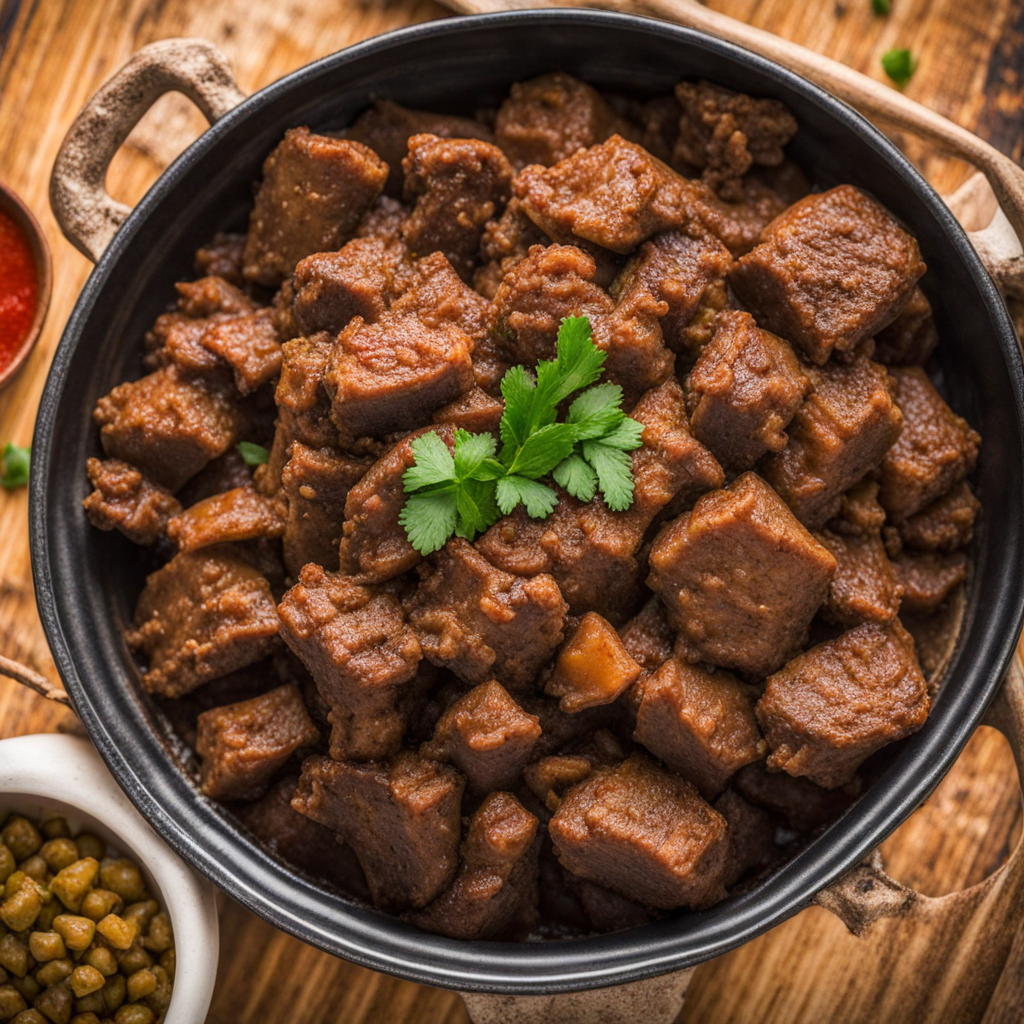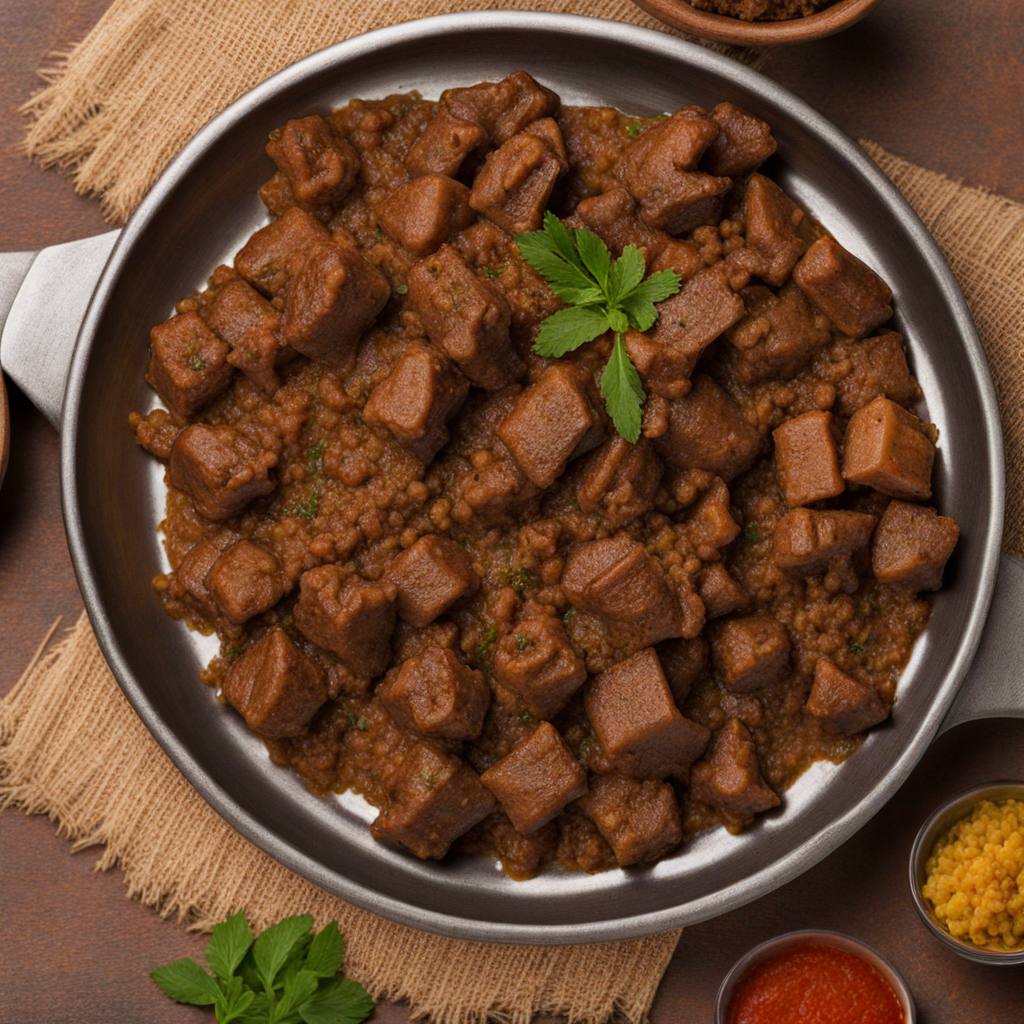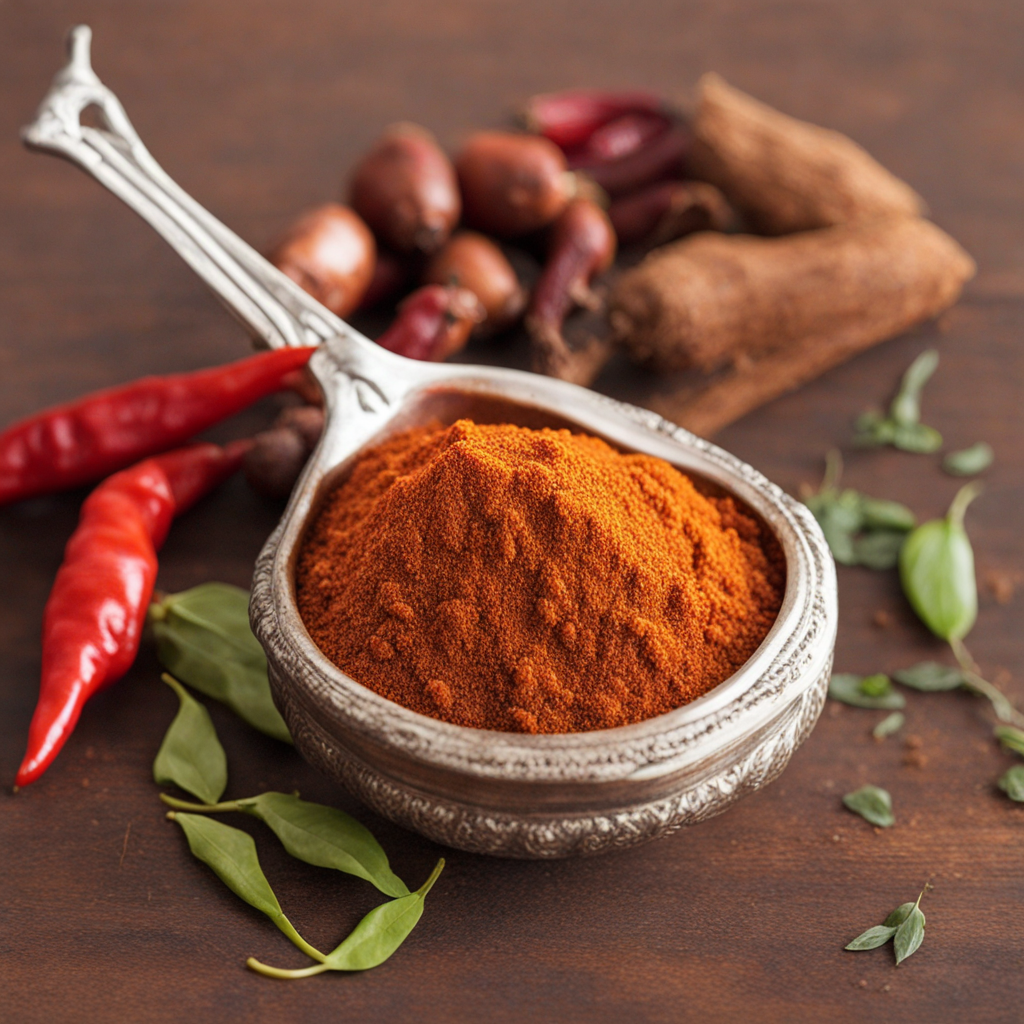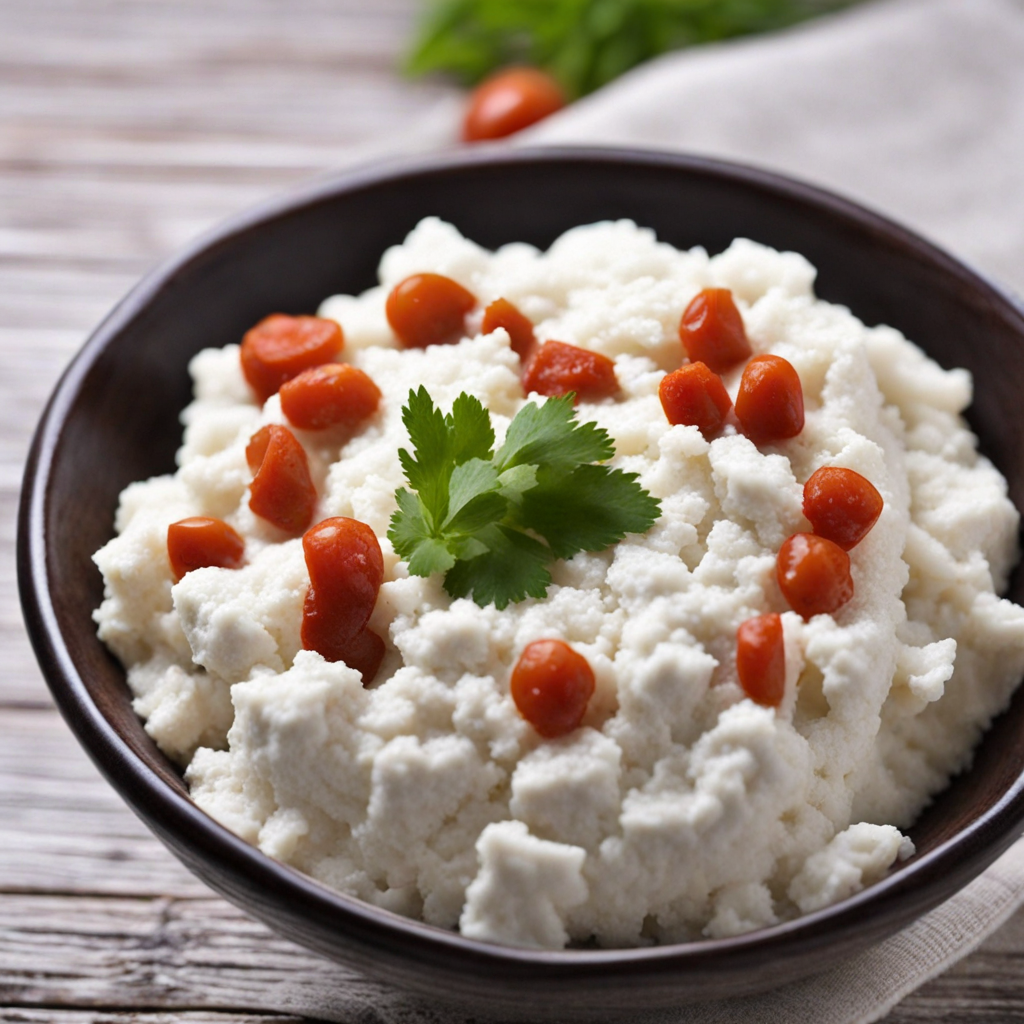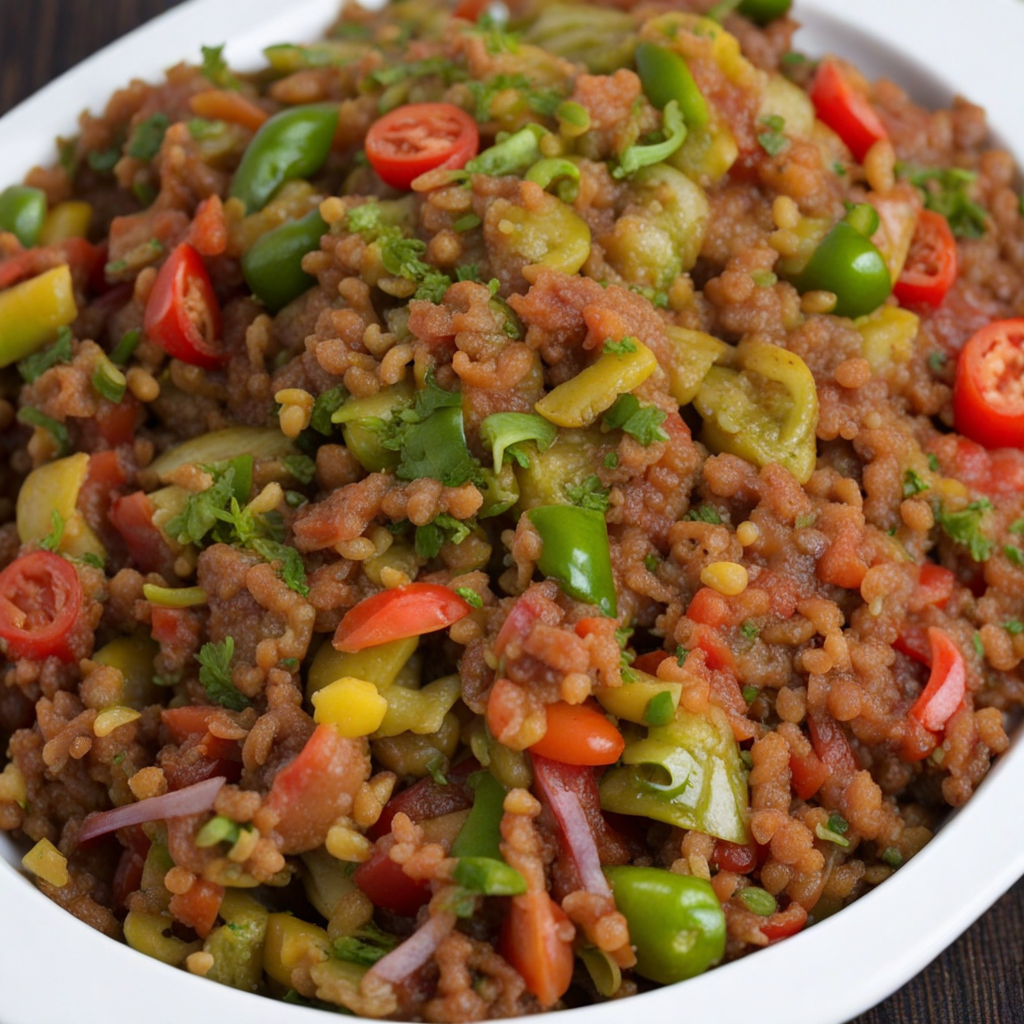Tibs
Tibs is a traditional Ethiopian dish that showcases the rich flavors and vibrant culinary culture of the country. It primarily consists of sautéed meat, typically lamb, beef, or goat, marinated with a blend of spices that reflect the warmth and depth of Ethiopian cuisine. The meat is cooked to perfection, often accompanied by onions, garlic, and a variety of chili peppers, creating a dish that is both aromatic and bursting with flavor. The use of berbere, a quintessential Ethiopian spice mix, adds a distinctive kick, making Tibs a delightful experience for those who enjoy a bit of heat in their meals. What sets Tibs apart is its versatility, as it can be prepared in various styles, from mild to spicy, and served in different ways. It can be enjoyed as a dry dish, where the meat is sautéed until crispy, or as a stew, where it is simmered with tomatoes and other vegetables, enhancing the overall richness of the dish. Tibs is often accompanied by traditional sides such as injera, a sourdough flatbread that serves as both a plate and a utensil, allowing diners to scoop up the savory meat and enjoy the full experience of Ethiopian dining. The communal aspect of enjoying Tibs is also an integral part of its charm. Typically served on a large platter, it invites sharing, making it a perfect dish for gatherings and celebrations. The combination of the succulent meat, the vibrant spices, and the shared experience of eating with hands creates a unique connection to Ethiopian culture. For anyone looking to discover a new taste of food, Tibs offers a flavorful journey that highlights the beauty of traditional Ethiopian cuisine.
How It Became This Dish
The History of ጥብስ (Tibs): A Culinary Journey through Ethiopia #### Origins and Early History Tibs, known as ጥብስ in Amharic, is a traditional Ethiopian dish that exemplifies the region's rich culinary heritage. Its roots can be traced back to the pastoral communities of the Ethiopian highlands, where livestock herding was a way of life. The practice of cooking meat, particularly from cattle, sheep, and goats, dates back thousands of years, coinciding with the domestication of animals in this region. Historically, Tibs was a dish associated with special occasions, including holidays, celebrations, and feasts. The preparation of Tibs would have involved communal gatherings, where family and friends came together to enjoy the fruits of their labor. The method of cooking was often a social event in itself; meat was seasoned with local spices and grilled or sautéed over an open flame, imparting a smoky flavor that became emblematic of Ethiopian cuisine. #### Cultural Significance Tibs is more than just a meal; it is a reflection of Ethiopian culture and hospitality. In Ethiopian society, sharing food is an expression of generosity and kinship. Tibs, often served on a large platter, encourages communal eating, where diners gather around to enjoy the dish with injera, the sourdough flatbread that serves as the cornerstone of Ethiopian cuisine. The act of tearing off pieces of injera and using it to scoop up Tibs fosters a sense of togetherness and connection among those sharing the meal. In addition to its communal aspects, Tibs has significant cultural symbolism. The dish often plays a role in religious and cultural celebrations. During holidays like Meskel (the Finding of the True Cross) and Christmas, Tibs becomes a centerpiece of feasting, showcasing the bounty of the land and the importance of community in Ethiopian culture. The preparation of Tibs also varies by region, with different spices and cooking techniques that reflect local traditions and agricultural practices. #### Variations and Evolution As Ethiopian cuisine evolved, so too did the preparation and presentation of Tibs. Today, Tibs can be found in various forms, each with its unique twist. The most common types of Tibs include: 1. Doro Tibs: Made with chicken, this variation is seasoned with an array of spices and often includes vegetables like onions and peppers. 2. Beef Tibs: Perhaps the most traditional form, beef Tibs is marinated in a blend of spices, including berbere (a spice mix made with chili peppers, garlic, and other spices), and sautéed with onions and peppers. 3. Lega Tibs: A more modern interpretation, Lega Tibs is typically made with diced meat that is cooked quickly at a high temperature, resulting in a tender texture. 4. Gored Gored: A more adventurous variant, Gored Gored consists of raw cubes of beef seasoned with spices and served with a side of injera or traditional dipping sauces. 5. Vegetarian Tibs: Reflecting Ethiopia's diverse dietary practices, especially among Orthodox Christians during fasting periods, vegetarian Tibs can be made with mushrooms, lentils, or various vegetables, seasoned with spices to capture the essence of the original dish. The evolution of Tibs also reflects the broader trends in Ethiopian society. The increasing urbanization and globalization of food have led to the emergence of modern Ethiopian restaurants that serve Tibs in innovative ways, combining traditional flavors with contemporary culinary techniques. This has further popularized Tibs, making it a beloved dish not just in Ethiopia but also in the Ethiopian diaspora around the world. #### Cooking Techniques and Ingredients The preparation of Tibs showcases the importance of local ingredients and traditional cooking methods. The primary ingredients include high-quality meat, typically from grass-fed cattle or free-range chickens, which are crucial in producing the rich flavors characteristic of the dish. The use of fresh herbs and spices, such as garlic, ginger, and the quintessential berbere, enhances the depth of flavor in Tibs. Traditionally, Tibs is cooked in a heavy pan called a “mitad” or a “kik,” which is ideal for searing and sautéing meat. The cooking process involves marinating the meat to allow the flavors to penetrate, followed by high-heat cooking to achieve a perfect sear while retaining juiciness. The addition of onions, tomatoes, and peppers during cooking adds a layer of sweetness and texture, making Tibs a complex and satisfying dish. #### Tibs in Contemporary Ethiopian Society In modern Ethiopia, Tibs remains a staple, enjoyed in households and restaurants alike. The dish has transcended its humble origins, becoming a symbol of Ethiopian culinary artistry. The growing interest in Ethiopian cuisine globally has led to a new appreciation for Tibs, with many chefs experimenting with fusion techniques while maintaining the core flavors and essence of the dish. Moreover, Tibs serves as a source of pride for many Ethiopians. It embodies the resilience and adaptability of Ethiopian culture, showcasing how traditional practices can coexist with modern culinary trends. As Ethiopian cuisine gains international recognition, Tibs has become a culinary ambassador, introducing people worldwide to the richness of Ethiopian flavors and communal dining practices. #### Conclusion In summary, Tibs is a dish steeped in history, culture, and communal significance. From its origins among pastoral communities to its evolution into a beloved staple of Ethiopian cuisine, Tibs reflects the diversity and depth of Ethiopia's culinary landscape. It serves as a testament to the enduring power of food to bring people together, nurture relationships, and celebrate cultural identity. As Ethiopia continues to share its culinary treasures with the world, Tibs will undoubtedly remain a central figure in this vibrant tapestry, inviting all to experience its rich flavors and the warmth of Ethiopian hospitality.
You may like
Discover local flavors from Ethiopia


